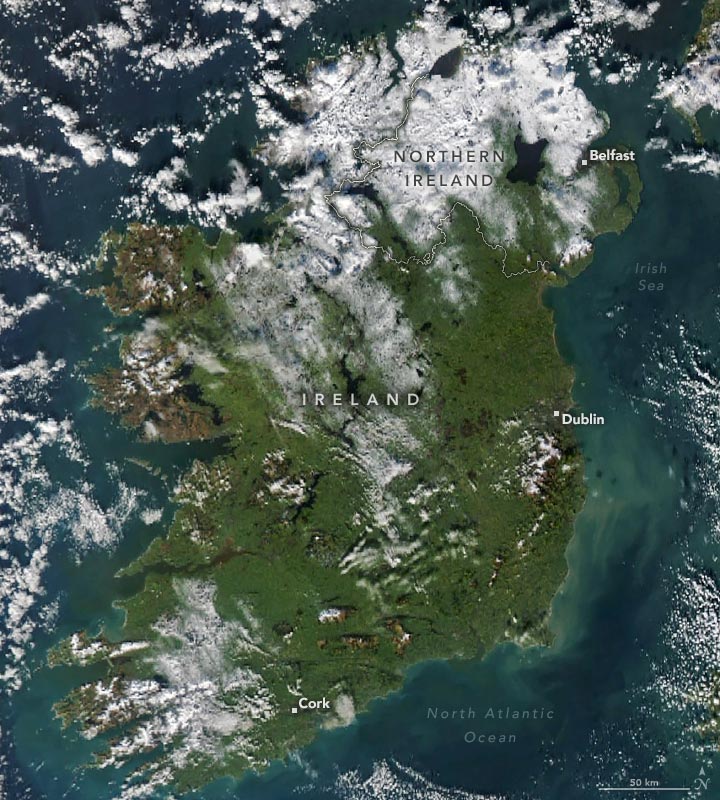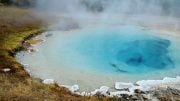
Satellite image of Ireland captured on January 19, 2023, by the Moderate Resolution Imaging Spectroradiometer on NASA’s Aqua satellite.
In ancient Greek and Roman times, the lush emerald isle of Ireland was called out for its long frosty seasons.
The term Hibernophile may conjure an image of someone who enjoys settling in for a long winter’s nap. In fact, Hibernophiles are fans of Hibernia, the classical Latin name for Ireland.
The name is said to have originated from Greek descriptions of the land; the Alexandrian polymath Ptolemy called the island Iouernia in his cartographic book Geographia. The Romans likely picked up on the similarity between this Greek form of the name and the Latin word hibernus, meaning wintry. (Think “hibernate” and “hibernacle.”) Hibernia may be interpreted as the “land of winter,” or with some poetic license, “the island of the eternal winter.”
Ireland’s Wintry Landscape
The MODIS (Moderate Resolution Imaging Spectroradiometer) on NASA’s Aqua satellite captured this hibernal image on January 19, 2023. On that day, clouds had mostly cleared after an Arctic air mass brought hail, sleet, snow, and frost to the island. Snow clings to areas of higher elevations.
In Ireland, snow falls most frequently in January and February, according to the Irish Meteorological Service, though flurries can fly from November through April. The coatings of white tend to be fleeting, and many winters go by without a major snowstorm. However, more extreme wintry weather does occasionally strike. For example, frigid Arctic air ushered in an early winter in 2010. And in more distant history, a huge snowfall in the year 764 reportedly stuck around for three months.
On the whole, though, Ireland experiences a moderate climate thanks to the North Atlantic Drift Current which carries warm ocean waters to higher latitudes. The water around the island tends to be coldest in February and March, leading to a slow warmup of air temperatures in the spring—and perhaps giving the impression that winters will never end.
Renewable Energy Advances
While winters may not always bring much snow, they do tend to be windy. In the lead-up to the winter of 2023-2024, persistent winds delivered a green energy victory to the Emerald Isle. On December 6, 2023, Ireland reached an all-time high for wind power output on the country’s grid: Wind met over 70 percent of Ireland’s electricity demands for that day. Ireland ranks among the top countries in the world in terms of the proportion of wind power in its electricity generation mix. In 2022, wind accounted for one-third of its energy production.
NASA Earth Observatory image by Michala Garrison, using MODIS data from NASA EOSDIS LANCE and GIBS/Worldview.









Total rubbish. Read up about various names for the island of Ireland used during it’s long history. “Ivernia” was only an attempt by speakers of Latin to pronounce “Íbheirn” in Gaelic. “Ivernia” became “Hibernia” and confused with the Latin for a winter quarters and so the rubbish as amplified in your article gained credence.
Scots came from Iberia to Ireland, and Spanish pronunciation of this sounds like this..Hiveria. guessing this is origin of Hibernia
Not one mention of the on going collapse of the polar vortex and arctic climate. Created by the century of fossil capital caused climate change
OT. Not every article must mention climate change or TFG.